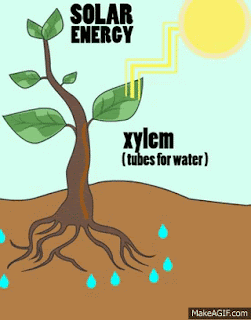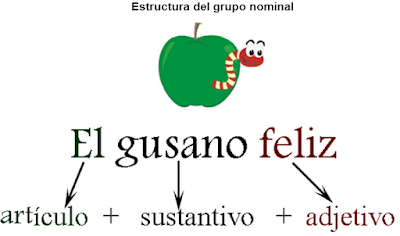VEGETATION
Vegetation is all plants in an area, region or country. Forest, shrubland, grassland and deserts are areas with different types of vegetation.
SPANISH: La vegetación o flora son todas las plantas de una zona, región o país. Los bosques, matorrales, praderas y desiertos son zonas con diferentes tipos de vegetación o flora.
FOREST/BOSQUE
A forest is an area where many trees grow close together. Some forests have only one type of tree. Other forests have many different types of trees, for example, rainforests. Forest need good conditions, such as high humidity and fertile soil.
SPANISH: Un bosque es una zona dónde muchos árboles crecen cerca y juntos. Algunos bosques solo tienen un tipo de árbol. Otros bosques tienen muchos tipos de árboles, por ejemplo la selva.
Un bosque necesitan buenas condiciones, como una alta humedad y suelo fértil.
 |
| Forest |
 |
| Rainforest |
SHRUBLAND/MATORRAL
Shurbland is an area dominated by bushes. Bushes grow in places with poor soil and low humidity. Sometimes, after a very long period of time, shrubland can grow into a forest.
SPANISH: El matorral es una zona dominada por arbustos. Los arbustos crecen en lugares con suelo pobre o poco fértil y baja humedad. Algnas veces, después de un periodo muy largo de tiempo, el matorral puede transformarse en un bosque.
GRASSLAND/PRADERA
Grassland is an area dominated by grasses. Grasslands are found in places with long periods of drought where forest cannot grow. Grasses die every year, but new grasses grow from thee seeds the following year. In Africa, grasslands are called savannah.
SPANISH: La pradera es una zona dominada por hierbas. Las praderas se encuentran en lugares con largos periodos de sequía dónde los bosques no pueden crecer. Las hierbas mueren cada año, pero nuevas hierbas se forman de las semillas al año siguiente. En África, las praderas se llaman sabanas.
 |
| Grassland |
 |
| Savannah |
DESERT/DESIERTO
A desert is an area with arid soil and very little water. There are very few plants.Cactuses grow in deserts because they need very little water. They store water in their stems. Temperatures can be very high during the day and very low at night.
SPANISH: Un desierto es una zona donde la tierra es árida y hay muy poca agua. Hay pocas plantas . Los cactus crecen en desiertos debido a que ellos necesitan muy poca agua y la almacenan en sus tallos. Las temperaturas pueden ser muy altas durante el día y muy bajas durante la noche.
CONCLUSION/OUTLINE (ESTUDIAR)
WORDLIST:
- Vegetation: vegetación, flora.
- Forest: bosque.
- Rainforest: selva.
- Tree: árbol.
- High humidity: alta humedad.
- Fertile soil: tierra fértil.
- Shrubland: matorral.
- Bush: arbusto.
- Low humidity: baja humedad.
- Poor soil: tierra pobre, poco fértil.
- Grassland: pradera.
- Grass: hierba.
- Drought: sequía.
- Desert: desierto.
- Cactuses: cactus.
- Arid soil: tierra árida.

















































